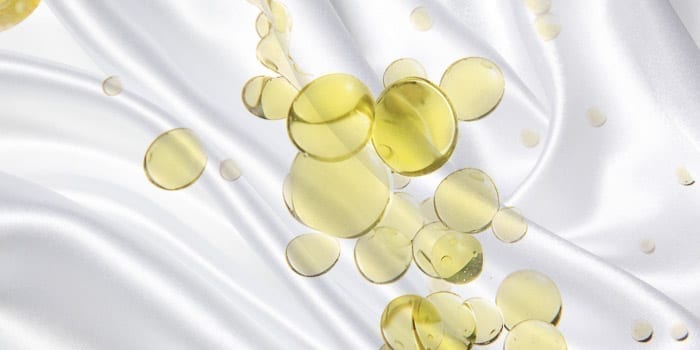To begin, a peek behind the curtain: Oftentimes, the topics I choose to write about here in this space are inspired by the people I work with. They’ll say, “Jolie, can you write about getting deodorant stains off of clothes? Because that happens to me all the time and it’s so frustrating!” Or they’ll ask, “How do you get oil stains out of silk? Is it even possible?”
It’s the “is it even possible?” part that gets me excited — it is possible (and I’ll tell you how in just a sec!). It’s always fun for me to get to share some of the tricks up my sleeves with people who are on the cusp of giving up hope, as exemplified by the “is it even possible?” lament. With that, let’s get right into it.
Oil stains on silk are so difficult because the stain itself is a tricky one, even on easily launderable fabrics like cotton. But when you get one of those dastardly stains on silk, which is a temperamental fabric, to put it mildly, it becomes a source of panic. Fortunately, there are a few different ways to remove a salad oil stain from your favorite silk blouse!
The Cornstarch Method
If you’re a baker or a person who regularly hosts Thanksgiving dinner, you probably already have cornstarch in the house; it’s used as a thickening agent in recipes ranging from gravy to pie fillings like lemon meringue. It also has fantastic absorbent powers, which is the key to understanding why it works to take a greasy stain out of fabrics.
To use it, lay the stained garment flat on a surface where it can stay 12-48 hours (so: not a high-traffic space). Pour a generous heaping pile of cornstarch on the stain and let it sit. That’s all! This is a delightfully hands-off process.
Over time, the cornstarch will slowly absorb the grease and your silk shirt will look good as new. All you need to do is brush the cornstarch away after it’s done its work.
The Talcum Method
Talcum powder can be used to virtually the same effect as cornstarch, so if you have that on hand you may substitute it for cornstarch. Follow the exact same instructions to remove oil stains from fabrics that can’t be treated with harsher products that are commonly used for treating greasy stains, like Lestoil.
The same can be said of chalk, but I recommend that approach less frequently because I don’t know a lot of people who have crushed up chalk lying around the house. The other reason I like to suggest the use of either cornstarch or talcum is that they’re so easily found in grocery and drug stores, and they don’t cost a whole lot of money.
Silk Stain Removers
If you own many silk items, whether they be blouses or scarves or ties, it’s not a bad idea to invest in a stain remover designed specifically for use on silk.
WinterSilks Spot Out is a liquid stain remover that comes in a spray bottle, and can also be used on wool and fine cotton. To use, spray a small amount on the stain and blot at it with a clean, dry cloth. The stain should come right out.
If you prefer something a little more portable, which can be tucked into a purse to treat salad dressing stains on the go, try Silk & Clean Stain Remover for Silk. The individually wrapped wipes are safe for silk and will work on both oil- and water-based stains.
Dry Cleaning
If all else fails, or if you just don’t have the right products on hand to remove stains from silk on your own, bring the garment to your local dry cleaner. Just be sure to point out exactly where the stain is, and to be as descriptive as possible about what it was that did the staining.
And with that, go forth and wear your silks without worry, knowing that an errant splatter of oil is no match for your knowledge of stain removal on delicate fabrics!




































